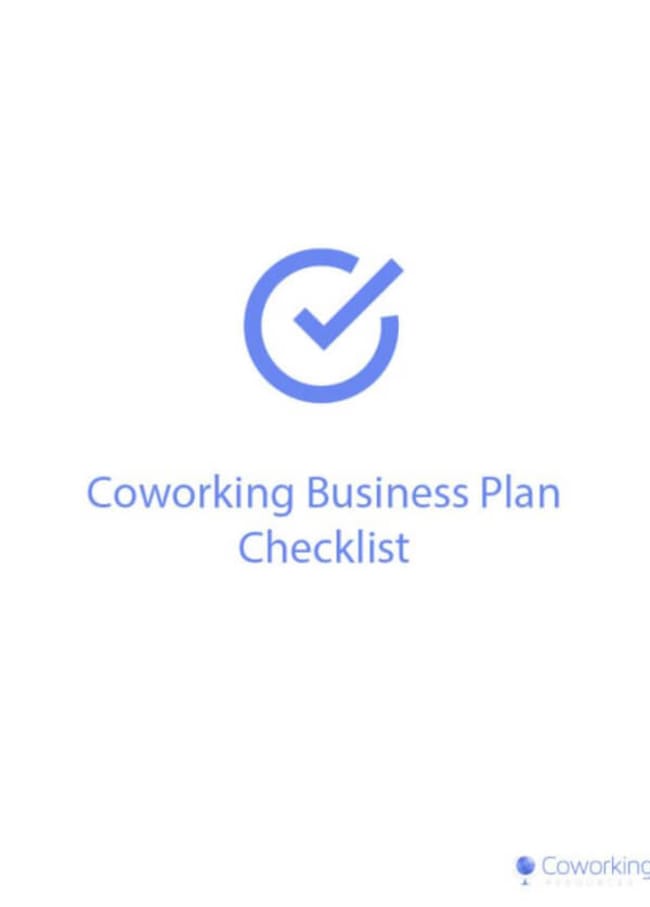Guide to Researching the Local Coworking Market
Assess the local demand before opening a space.
01
How to Analyze Your Competitors

Before opening a coworking space, one of the first steps you should take is a competitor analysis. It can help you stay ahead of your competitors and ensure that your coworking space stands out in a crowded market. A recent CoworkingResources study found that the coworking market is growing at a steady rate. Some cities like London and New York see a new coworking space opening up every five or seven days! Because of the popularity of coworking spaces, it has become more essential than ever for coworking owners to understand the market before opening a space.
The goal of many coworking owners is to create a space that stands out from the other options available. However, the only way you can understand how your business compares is by looking at the surrounding coworking spaces and conducting a thorough competitive analysis.
The competitive analysis is an essential part of your business plan because it can help you hone in on what your customers want. Despite what you might believe, there is a way to research and learn from your competitors without being sneaky or blatantly stealing customers. While you might not have a big budget for conducting market research or hiring a professional market intelligence firm, you can still learn from your competitors by doing some simple research in a non-threatening way.
Identify Your Competition
Your competitors will be anyone who targets the same market as you and offers a similar coworking or flex workspace in your immediate area. Start with a Google search. Look up “coworking spaces in [city]” and compile a list of every business you can find. And since “coworking” still a fairly new term in the mainstream market, try the words, “flexible office”, “shared office”, or any commony-used synonym for “coworking”. With some intelligent internet searches, you’ll quickly see who is ranking high for some keywords or phrases that are similar to your business goals.
Identify both the direct competition, which is someone who will offer the same products or services, and the secondary or indirect competition, or someone who will offer slightly different products or services.
Gather Information
The advent of the Digital Age as required new businesses to become experts in two essential disciplines: SEO and content strategy. These fields are paramount for a new business that needs to reach potential customers. Luckily the basics are easy enough for the average person to pick up without getting another college degree.
Once you have identified who your major competitors are, you need to learn as much information about them as possible. Ubersuggest is a free tool that you can use to research the most important keywords in the industry and to get a sense of your competitor’s marketing strategies. With this tool you can easily see which keywords and links are delivering the most online traffic for the coworking space in question.It can help you gain insight into your competitor's SEO practices and also see which domains you might be competing against for the top positions on Google. While some of the terms on the website may be hard to understand at first, the learning curve is low enough that anyone motivated enough to do some real research will learn quickly.
Read Everything
Visit the company’s website and keep notes on the data you find. What are their pricing levels? How do they market themselves to their members? Staying organized is vital here, especially if you have multiple competitors. Make a spreadsheet and fill it with links to each business’ blog posts, videos, webinars, podcasts, flyers or brochures, websites, feature articles, and any news releases. Press releases can be particularly useful because it will highlight any changes or improvements the business has made in recent years.
To create a useful competitive analysis, you need to read everything you possibly can about each business. While this might be time-consuming, it is a crucial step because it not only helps you to gain insight into the market, but also helps you think about how to differentiate your space, and puts you in the analytical mindset you need to have to sustain a business. As you read, keep track of the quality of the posts, and take the time to identify the style and tone that your competitors are using to speak to their members. Are their videos and other content effectively marketing the space? What do you think you could do better?
Here's an example of an organized competitive analysis chart that will allow you to easily compare the strengths and weaknesses of the competing coworking spaces in your area:

02
Field Research Checklist

This step should be taken before you start building your community. It's the perfect way to start building your community and garnering contacts by asking a few simple questions will build your network for the future. These tactics are to help you identify the gaps in the local workforce and assess the need for a flexible work environment.
Pro tip: Try to stick to ethnographic research as much as possible.
Don’t rely too much on face-to-face interviews to gauge market demand. You run the risk of having people say what they think you want to hear, rather than what they would really do if a coworking space was available to them. To get accurate data it’s often more reliable to focus on people’s actions and behavior rather than what they say. That’s why observation and analysis of other coworking spaces or popular business centers is highly recommended. But casual conversation is still a great way to gauge general interest, build a network, and even pinpoint the type of community you would like to target.
Below is a checklist template containing example questions that you should be asking to gauge the demand for coworking in your local area:

The Guide to Make Your Space More Profitable
Including interviews with experts and consultants.
04
Gauge the Freelance Population

As an early stage space, most of your clients will probably be freelancers and remote workers when you first open. So find a way to gauge what percentage of your local community are freelancers, digital nomads, remote workers, or small startup teams.
You can use the following sites to get some rough numbers on the population. Use the filters of each site as if you were posting a job. Narrow down the resulting list of freelancers available for your "job" by location and experience. The most experience workers are probably full-time freelancers and are more likely to be open to working from a coworking space.
Upwork
Fiverr
AngelList (for startups)
Freelancer
Guru
JournalismJobs
Indeed
ZipRecruiter
Behance
Dribble
You may also find some great demographic information by visiting your local workforce agency. As a local business owner, they may be happy to give you valuable statistics and contact lists for freelancers, remote workers and startups looking for affordable office space.
The data you gain from this step, though it may be small depending on your location, contains fairly accurate info. The sites listed above are trusted resources for people motivated to work on their own terms. There is a good chance that the mindset of the workers listed on these sites will align well with your coworking mission and be responsive when you finally reach out to them.
05
Tips From an Expert Consultant

Melissa Schilo, a coworking consultant at Workspace Concierge with over 12 years of experience in flexible workspace solutions, has a few tips for those looking to research their local market for interest in coworking.

Melissa recommends using DataUSA.io for demographic info in your local area. On this site, you can find statistics on a plethora of industries and socioeconomic information that may give you some guidance on the pricing and accessibility you want your future coworking space to have.
Questions to ask:
- The average salary of your target audience.
“The earning capacity in your area is extremely important to know. This will determine the amount you are able to charge for memberships and inform your vision for the space.”
- How many freelance workers are in your area?
- Major employers in the area. Are there any startups or technology companies that could lead to memberships?
CoworkingResources has partnered with several expert coworking consultants with years of experience in the industry all over the world. They give professional advice for prospective owners on everything from coworking space technology, to designing your space, building a community, and much more. Melissa says,
“In terms of technology, it’s important to find software that automates your processes as much as possible.”
06
Take Advantage of the New Knowledge

Some of the above steps may be as simple as a few Google searches, and some involve more proactive field research. As of right now there is no exact formula for this type of research in the coworking industry. Everything is still so new! Either way, just remember that coworking culture is built on friendly networking, community building and having an open mind. We've found that, generally, there is a high demand for coworking almost everywhere. The number of freelancers and remote workers will only increase in the years to come, and statistics related to this trend is what you should be paying attention to within the scale of your local community.
The data you acquire from the above steps are essentially the preliminary moves needed to build a proper coworking business plan and strengthen your vision for the space. Many people start businesses without taking these crucial steps and find the first few months (or even years) to be full of mistakes and wrong assumptions that could have been avoided with just a little bit of preliminary research. With this guide, we hope to streamline this process for the many people who are considering jumping into the coworking industry. Fortunately, owning a coworking space does not require an advanced business degree or tons of prior knowledge. It only takes a patience, diligent research and sensitivity to the local market. The methodical research we encourage will hopefully save you from rookie mistakes in the world of business.
It should also be reiterated that your research does not have to be underhanded or sneaky towards your future coworking competitors. By its very nature, coworking is a concept that encourages collaboration, openness and healthy competition. No matter how large a space may be, there is no winner-take-all for one particular region. This is why it’s important to cultivate your community from the beginning and differentiate your coworking concept so you present a unique angle on the coworking experience. There is no need to badmouth or undermine other coworking spaces in the process. In fact, such practices will most likely reflect poorly on your own business strategies rather than the competition. The existing coworking spaces do have an advantage in that they may have a more established and tight knit community, so it's up to you to create your own coworking niche and tap into the communities that may be under-served or forgotten by larger, more established spaces. Use this research to define your target market, engage with potential members and hone your purpose so that you can build a truly agile and productive coworking space.




03
Fact-finding on Social Media
Social media analysis is an easy (and free) way to gauge the local interest in coworking as well as how familiar people are with the concept. Though coworking has become mainstream and wildly popular in most metro areas, the idea still has novelty for smaller, suburban and rural locales. If there is not already a coworking space in the area you are thinking of serving, it will definitely be an advantage if you start researching the social community to see how receptive people are to this revolutionary concept. Being the first to market in your area also means that you have the rare opportunity to shape the conversation around coworking, introduce your preliminary mission and simultaneously educate potential members on the benefits of coworking. Use the following questions as a guide when making inquiries on social media about the demand for a coworking space:
No matter what the responses are to these questions, a social media poll is your chance to cultivate the budding coworking community and highlight how your concept would make people's professional lives better. The resulting conversations can help you pinpoint the problems of the freelancers and remote workers in your area, giving you more direction for your coworking business plan and collecting what will essentially be your first contacts if and when you do open the space. Feel free to ask more questions to delve deeper into the missing links in the local workforce. What about the local freelance community inspires you in terms of coworking? Which groups do you want to bring together with your coworking concept? Artists and creatives? Do you want to support the small hopeful startups in your area? These preliminary questions should ignite and confirm your passion for the coworking startup world!
Coworking Space Management Guide